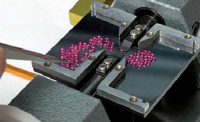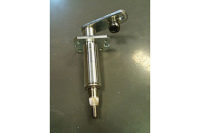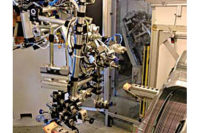Founded in 1854 as the Waterbury Clock Co., Timex Group USA is, and has been, America’s leading watchmaker for more than a century. The company’s watches are sold in more than 80 countries worldwide and manufactured in the Americas, Asia and Europe.
Fralsen-Timex, based in Besancon, France, has been supplying micro-precision components to the parent company since 1962. Components include small, injection-molded plastic parts with very fine details; complex springs; and cut wheels, pinions, arbors and rivets.
Prior to shipment, each cut component is inspected to make sure it meets strict measurement tolerances for concentricity (15 microns) and center-to-center spacing and distances (±10 microns).
For many years, Fralsen-Timex inspected components with conventional equipment, including micrometer comparators, microscopes, templates and projectors. Unfortunately, these instruments, although very accurate, do not allow for quick measurements. Comparators require a high level of skill to use, and microscopes require a reference point for truing up. The downside of templates and projectors, according to Sylvain Scotto, quality control manager for Fralsen-Timex, is their measurements can sometimes be misinterpreted.
In early 2013, the company decided to replace this equipment with an automatic system that quickly inspects components, logs measurements and can be operated by nonspecialists. Fralsen-Timex selected the IM-6500
measurement system, made by Keyence Corp. of America, because it meets all three criteria.
“The system eliminates variations of measurement interpretation by displaying green for good or red for bad,” explains Scotto. “It can also measure several parts simultaneously.”
Component inspection is a simple four-step process. The quality control inspector places a component on the system’s inspection area, makes sure it is in focus in the viewing area, uploads the program for the part being inspected and presses the start button.
The system automatically compares part and master profiles (imported from CAD files), indicates whether the part is in or out of tolerance, and shows the tolerance difference. It measures up to 99 points in a matter of seconds, with a repeatability of ±1 micron. The system’s iPASS shape detection feature finds and measures targets regardless of their position or orientation.
Scotto says all QC technicians use the machine for final inspection of parts before they are placed in stock. Operators in the cutting shop also use it to measure certain parts during production.
The machine significantly reduces the inspection time of some components, notes Scotto. For example, the old template-and-projector method of inspecting the concentricity of a cut wheel took about 1 minute. The IM-6500, by comparison, inspects three wheels in less than one minute.
It does this by superimposing the contour of the wheel’s stator on the master CAD file. When red, the contour shows that the stator is at the tolerance limit in certain areas (blue zone). This profile also allows the mechanical engineering department to see where parts need reworking.
After more than one year of operation, Scotto says the company hasn’t received a single customer complaint about any of the parts measured on the machine. For more information on image measurement systems, call 888-539-3623 or visit www.keyence.com.




